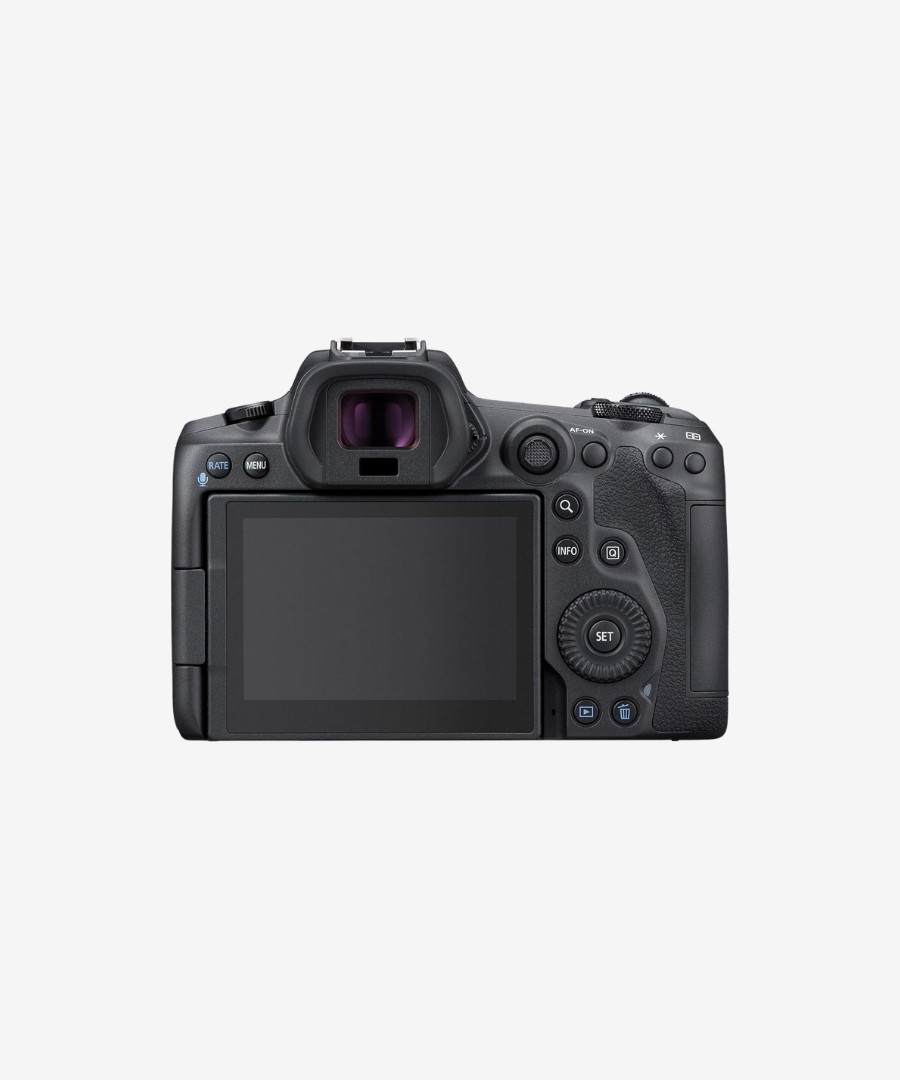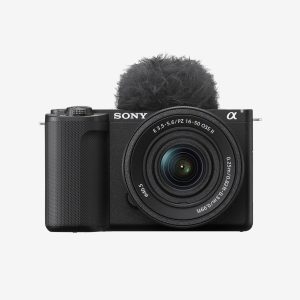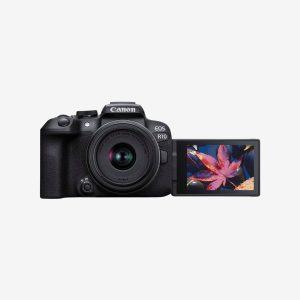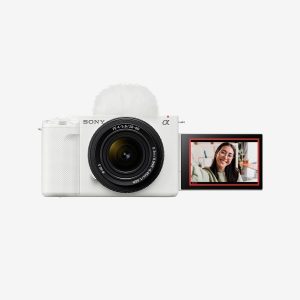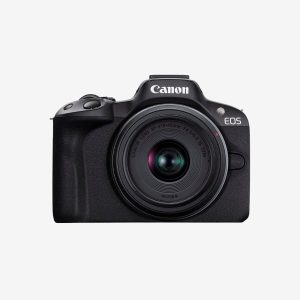The Canon R5 Mark II revolutionizes professional videography by capturing 8K RAW video at 60 frames per second. This powerhouse camera comes with features we’ve never seen before. The eye-controlled autofocus stands out and lets users select subjects just by looking at them through the viewfinder.
Professional videographers will love the camera’s advanced features. The Canon C-Log2 delivers wider dynamic range, and the system includes waveforms and false color display. The camera’s in-body stabilization system delivers up to 8.5EV correction that keeps footage steady even in tough shooting conditions.
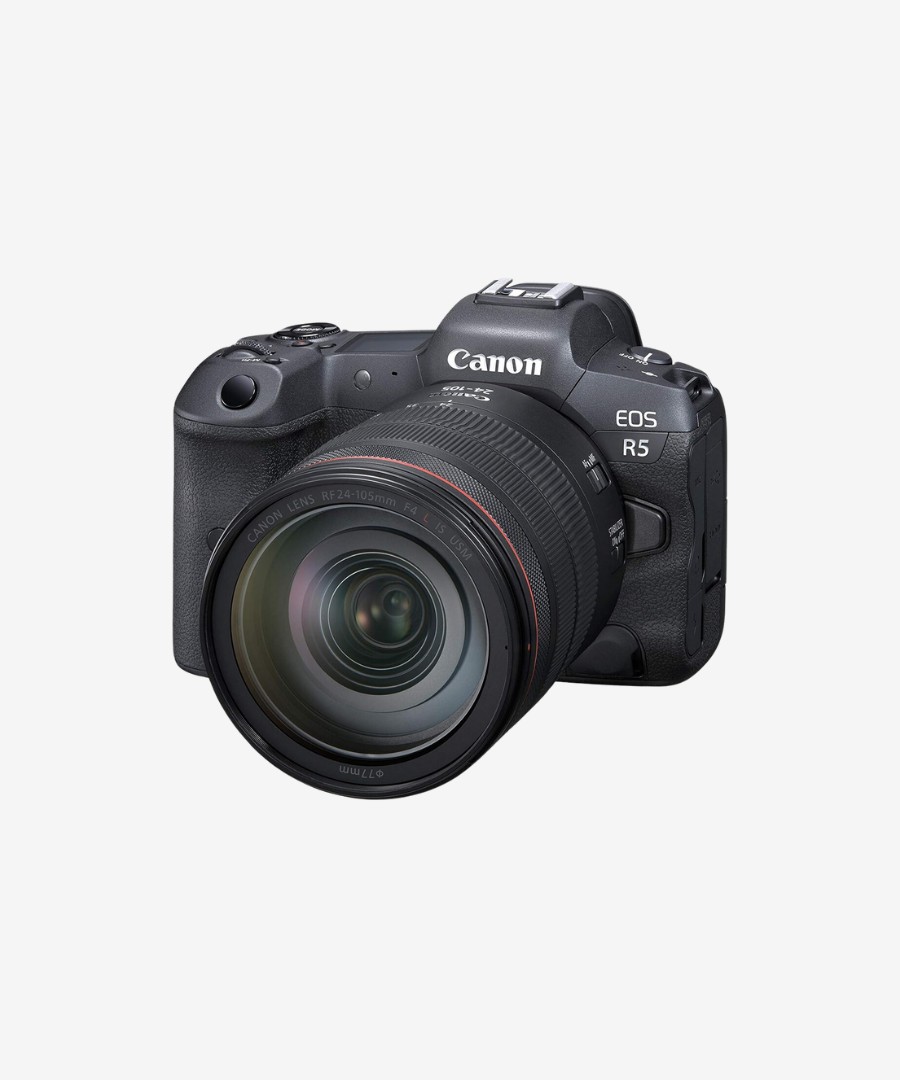
8K Video Recording
The Canon R5 Mark II builds on its predecessor’s success with a comprehensive set of professional video recording features. This camera can capture 8K DCI footage at 8192 x 4320 resolution up to 30fps.
The camera’s standout feature lets you record 8K RAW video at 60 frames per second. You can choose between DCI (17:9) and UHD (16:9) aspect ratios for both 8K and 4K recording. The R5 Mark II uses Canon’s Raw Light format to keep file sizes manageable while maintaining quality for 50 and 60fps footage.
The R5 Mark II gives you these frame rate options:
- 8K DCI (8192 x 4320) at 29.97/25/24fps
- 4K DCI (4096 x 2160) at up to 119.9fps
- 4K UHD (3840 x 2160) at up to 119.9fps
The camera brings a special dual shooting feature that lets you capture UHD 8K JPEG stills and Full HD video simultaneously at up to 30p. You can record standard modes for up to 6 hours without the 4GB file limit when using exFAT formatted cards.
The R5 Mark II supports several compression formats including XF-HEVC S/H.265 and MPEG-4 AVC S/H.264, each with Linear PCM or AAC audio options. You can extract frame grabs from your recorded footage – pulling 35.4-megapixel JPEG stills from 8K DCI movies and 8.8-megapixel images from 4K DCI footage.
8K Video Recording Options
The Canon R5 Mark II’s stacked CMOS sensor delivers amazing 8K RAW recording at up to 60 frames per second. Users can choose between multiple 8K recording formats – DCI (17:9) resolution at 8192 x 4320 and UHD (16:9) at 7680 x 4320.
The camera gives professionals these frame rate options:
- 8K DCI: 29.97, 25, 24, and 23.98 fps
- 8K UHD: 29.97, 25, and 23.98 fps
- 8K RAW Light: 59.94 and 50 fps
The R5 Mark II handles data rates well through its RAW compression options. Standard 8K RAW at 29.97p/25p/24p runs at about 2600 Mbps. The RAW Light format brings this down to 1670 Mbps at 29.97p, 1400 Mbps at 25p, and 1340 Mbps at 24p.
Recording time has improved thanks to better thermal management. The camera records 8K 30p for about 26 minutes without the cooling fan. Adding the optional cooling fan extends this to 106 minutes. This is a big deal as it means that recording can go beyond two hours with high temperature settings under ideal conditions.
Rolling shutter performance stands out with measurements of 12.8ms for 8K 60p RAW Lite and 17.3ms for 8K 30p RAW. These numbers mean minimal distortion when moving the camera quickly or capturing fast-moving subjects.
4K and HD Recording Modes
The R5 Mark II goes beyond impressive 8K capabilities and delivers exceptional performance in 4K and HD recording modes. Users get both DCI (4096 x 2160) and UHD (3840 x 2160) 4K options that reach frame rates up to 119.9 fps.
Professional users can access these recording options:
- 4K DCI at 119.9, 100, 59.94, 50, 29.97, 25, 24, and 23.98 fps
- 4K UHD at 119.9, 100, 59.94, 50, 29.97, 25, 24, and 23.98 fps
- Full HD at up to 239.76 fps that captures extreme slow-motion footage
The R5 Mark II brings HDR movie recording at up to 59.94p in 4K DCI/UHD and Full HD modes among other standard recording features. This HDR capability combines normally exposed and unexposed footage to boost highlight detail.
Standard modes allow recording for up to 6 hours. The camera maintains continuous recording for up to 26 minutes at the time you shoot in high frame rate modes like 4K 120p.
The camera’s dual shooting capability stands out by capturing UHD 8K JPEGs on one card while recording Full HD video at 30p on another. Users can also leverage proxy recording – 8K RAW or 4K compressed footage goes to the CFexpress card while lower resolution, compressed proxy footage records to the SD card.
ExFAT formatted cards remove the 4GB file limit constraint. The camera’s professional-grade audio options support both Linear PCM and AAC audio formats across all recording modes.
Video Compression Formats
The Canon R5 Mark II comes with advanced video compression formats that perfectly balance quality and file size. The camera features two professional-grade formats: XF-HEVC S (H.265) and XF-AVC S (H.264). Both formats support high-quality video recording with Linear PCM or AAC audio.
The XF-HEVC S format gives you these options:
- YCC422 10-bit: Perfect for professional editing with 4:2:2 color sampling
- YCC420 10-bit: Delivers efficient compression without sacrificing quality
- YCC420 8-bit: Ensures broader playback compatibility
The XF-HEVC S format handles 8K recording at different bit rates. These range from 1920 Mbps for high-quality intra-frame 24p to 540 Mbps for standard long GOP 25p. The XF-AVC S format supports both 10-bit 4:2:2 and 8-bit 4:2:0 color sampling. Its bit rates can reach 1500 Mbps for standard intra-frame 100p recording.
You’ll find two compression methods in this camera: intra-frame (All-I) and Long GOP. The intra-frame compression processes each frame individually. This creates larger files but gives you better editing flexibility. Long GOP compression looks at keyframes and records only frame differences. This creates smaller files that work well for longer recording sessions.
The R5 Mark II’s RAW recording uses Canon’s Raw Light format to maintain image quality with efficient data compression. The 8K RAW standard recording runs at about 2600 Mbps and delivers exceptional detail. Professional editors will appreciate this format because it works directly with Digital Photo Professional software.
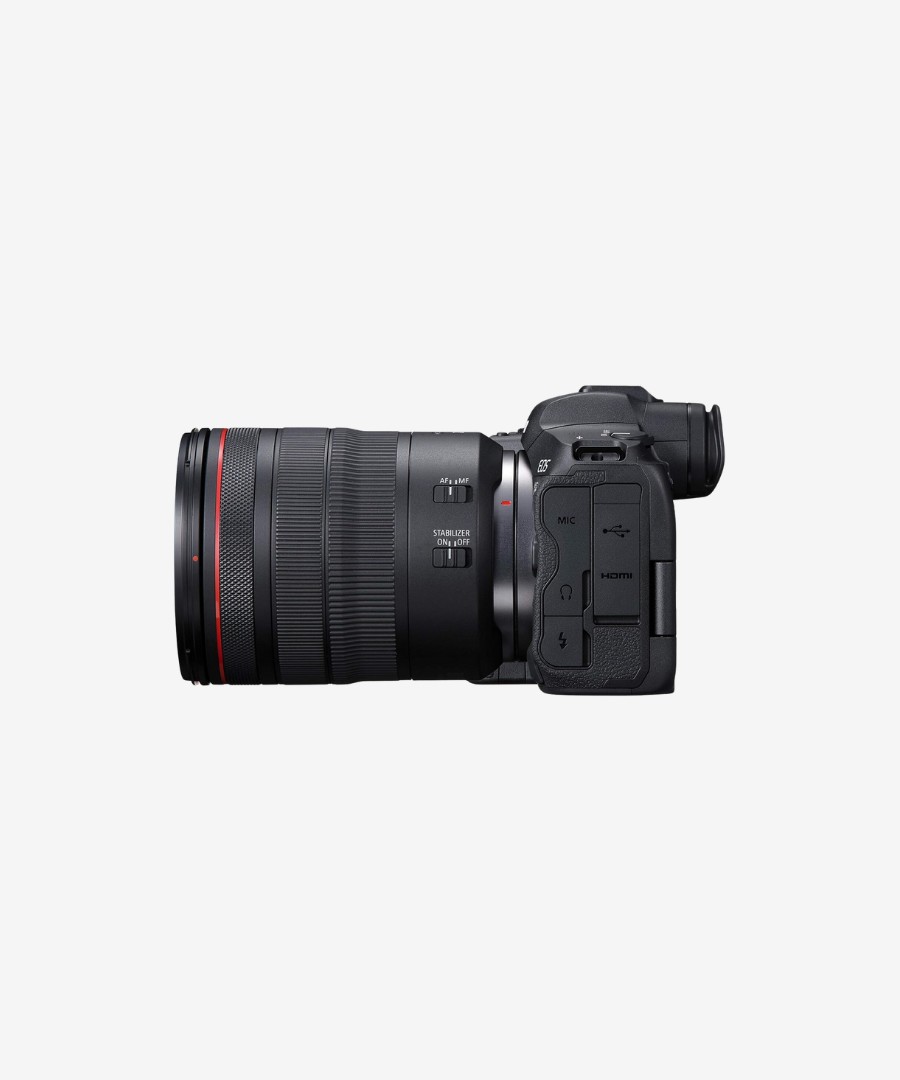
Professional Video Features
Professional videographers will love the advanced features built into the R5 Mark II’s video system.
Canon Log 2 Profile
The R5 Mark II comes with Canon Log 2 and Canon Log 3, which give you different advantages based on what you’re shooting. Canon Log 2 gives you wider shadow tones with rich gradations that make shadow details pop. Canon Log 3 makes grading work easier when you need to adjust contrast and color.
Canon Log 2 shines with these features:
- It matches film characteristics closely
- You get a wide linear range in semi-logarithmic graphs
- The gain increase gives you about two stops of highlight room
Raw Video Recording
The R5 Mark II captures 8K RAW footage at up to 60p using Canon’s Raw Light compression. This format keeps exceptional quality while managing file sizes effectively. We tested both 8K RAW and 4K SRAW options in DCI format.
HDR Video Options
You can record HDR in multiple modes, with speeds up to 59.94p in Normal modes of 4K DCI/UHD. The camera holds onto impressive detail in highlights during high-contrast scenes.
The HDR PQ settings match ITU-R BT.2100 and SMPTE ST.2084 specifications. You can pick between Exposure Priority to focus on mid-tones and Tones Priority for highlights. HDR recording works with ISO ranges from 800 to 12800.
The camera’s HDR assist display options show you how your footage will look on HDR devices. Some shooting conditions might affect image quality – you might see noise or uneven gradation in skies and white walls. Recording test footage helps you nail down the best settings before your actual shoot.
Advanced Video Controls
The R5 Mark II’s advanced monitoring tools from Canon’s Cinema EOS line help raise its professional video capabilities. These features help users achieve precise exposure and optimal image quality in shooting scenarios of all types.
Waveform Monitoring
The R5 Mark II shows waveform monitors on both the camera screen and external displays through HDMI output. Users can choose between two waveform options: Line display shows brightness values across the entire image, while RGB parade display tracks red, green, and blue channel values separately. The waveform display stays active during custom picture adjustments, which allows precise exposure control.
False Color Display
The camera’s sophisticated false color system uses six distinct colors for different brightness levels. This color-coded display appears on both the camera screen and viewfinder with these brightness indicators:
- Red indicates white clipping
- Yellow shows areas just below white clipping
- Pink represents one stop over 18% gray
- Green marks 18% gray
- Blue indicates areas just above black clipping
- Purple shows black clipping
Custom Video Settings
The R5 Mark II’s button layout can be customized specifically for video shooting. Users can assign different functions to the same button for still photos and video modes. The camera supports advanced settings like iris ring control on compatible RF lenses that work in both still and video modes.
The camera has professional workflow features such as full-size HDMI output, a Tally lamp, and four-channel audio support. These controls combine smoothly with industry-standard file naming and proxy settings, making the R5 Mark II suitable for production environments of all types.
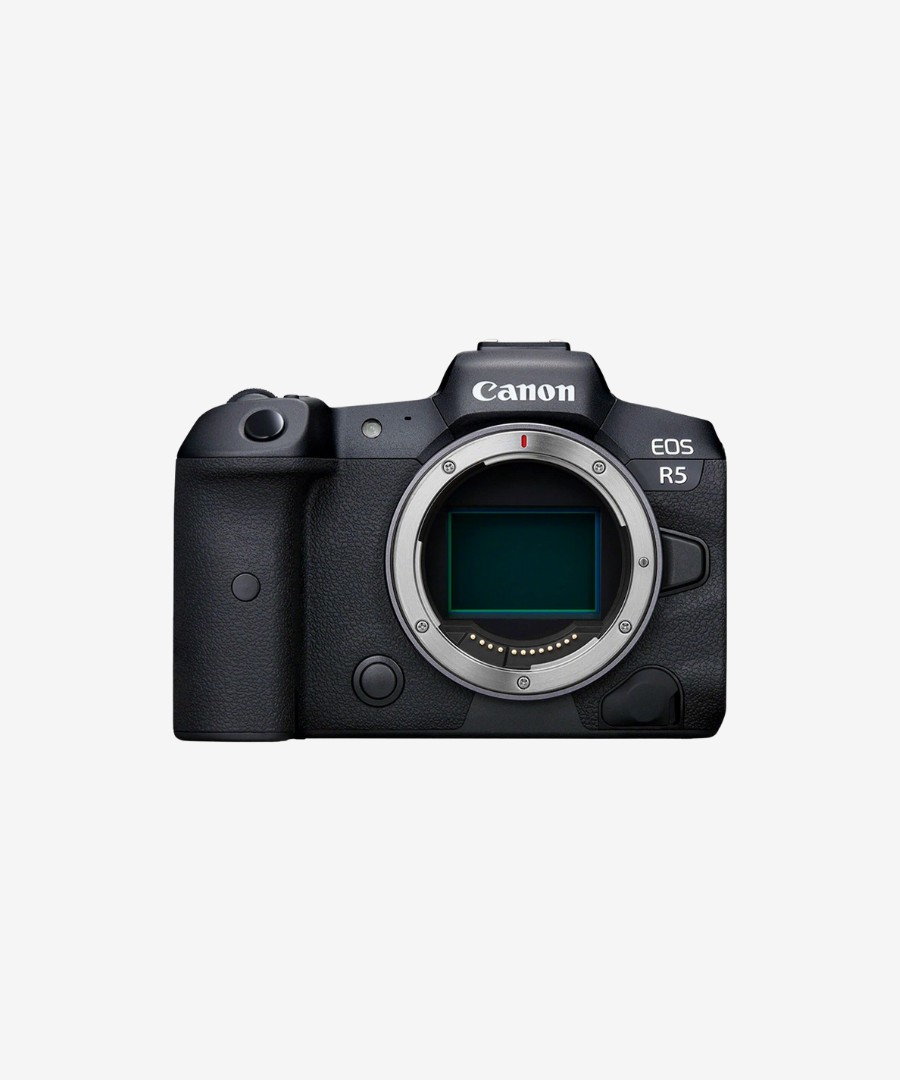
Video Autofocus System
The Canon R5 Mark II’s autofocus system brings major improvements to video shooting thanks to its new Digic X processor. The camera’s eye-controlled autofocus system works better with its wider field-of-view sensors and updated algorithms that work well even if you wear glasses.
Eye Detection Performance
Users can choose which eye to focus on, though the system defaults to the closest eye. The system keeps focus with amazing consistency, even when subjects look away for a moment. The camera switches focus smoothly between eyes as subjects move and keeps everything sharp throughout the frame.
Subject Tracking
The R5 Mark II’s subject recognition system has these advanced tracking modes:
- People detection with upper body tracking
- Animal recognition (dogs, cats, birds, horses)
- Vehicle tracking (sports cars, motorbikes, aircraft, trains)
- Auto mode for intelligent subject switching
The camera uses hierarchical tracking that focuses on eyes first, then moves to faces, heads, and bodies in sequence. The Register People Priority feature lets you save up to 100 people’s faces, with the top 10 getting priority tracking.
AF Customization Options
Eight different AF area modes are available, from tiny spot focus to full-scene automatic selection. You can adjust tracking sensitivity through seven levels, which changes how fast the camera responds when subjects move away from focus points. The Movie Servo AF speed can be adjusted for compatible lenses to create smooth focus transitions during recording.
Action Priority mode comes with sport-specific tracking for soccer, basketball, and volleyball. The camera follows game-specific movements automatically without needing photographer input. This feature helps capture dynamic scenes where quick focus changes matter most.
Audio Recording Features
The Canon R5 Mark II shines with its advanced audio recording system. This camera supports LPCM 24-bit 4-channel and AAC 16-bit 2-channel audio formats, which are a great way to get professional-grade recordings in different situations.
Built-in Microphone Performance
A built-in mono microphone operates at 48 kHz sampling rate. We recorded audio in either 24-bit or 16-bit depth through two channels. While the built-in microphone captures ambient sound well, users might notice mechanical noises from lens operations or autofocus adjustments during recording.
External Audio Options
The R5 Mark II lets you record sophisticated four-channel audio through several setups:
- Multi-function shoe microphone (2 channels) + external microphone (2 channels)
- Multi-function shoe microphone (2 channels) + built-in microphone (2 channels)
- External microphone (2 channels) + built-in microphone (2 channels)
The camera features advanced audio controls with wind filter and attenuator settings. Wind filters help reduce outdoor noise but might affect some low-frequency sounds. The attenuator helps prevent sound distortion when audio sources get too loud.
Audio Monitoring Controls
A 3.5mm headphone jack provides detailed audio monitoring options. Users can choose specific channel combinations to monitor during shooting and playback. The audio recording level indicator shows selected channels on the movie screen, giving you precise control over audio capture. The camera’s manual recording level adjustments work with visual feedback through the level meter, making it perfect for professional use.
Video Stabilization
The Canon R5 Mark II’s stabilization system sets new measures for handheld video recording. Its refined in-body image stabilizer delivers up to 8.5 stops of correction at the image center and 7.5 stops at the frame edges.
The system combines three distinct technologies: lens-based stabilization, in-body stabilization, and Movie Digital IS. This triple-threat approach creates steady footage even in challenging shooting conditions. Movie Digital IS measures camera and lens movement and compensates through its digital algorithm.
The R5 Mark II offers two Electronic IS modes beyond standard stabilization:
- High mode: Uses a larger crop for better adjustments
- Standard mode: Balances crop factor with stabilization needs
The camera keeps its stabilization effective in shooting scenarios of all types. This is a great way to get results when using non-IS lenses, as Movie Digital IS works independently. When paired with stabilized lenses, all three technologies work together in Combination IS to maximize stability.
The system works best with wide-angle lenses where stabilization shows impressive results. The improved stabilization makes footage smoother during handheld shooting, with performance measurements showing better stability than previous models.
The optional cooling fan attachment CF-R20EP helps in long video sessions. It regulates internal temperatures and allows up to two hours of continuous recording. This cooling system becomes essential when shooting stabilized footage for long periods because it prevents performance issues from heat buildup.
IBIS Performance
The Canon R5 Mark II’s In-Body Image Stabilization (IBIS) takes camera stabilization to new heights. It delivers an impressive 8.5 stops of shake correction at the center and 7.5 stops at the frame edges. This major improvement comes from the RF mount’s large image circle, which boosts the system’s overall capabilities.
The R5 Mark II uses a sophisticated coordinated control system between the camera and lens. The setup combines gyro and acceleration sensors in both the lens and camera body with imaging movement vector sensors. These components work together through the lens CPU and DIGIC X processors to perfect the optical correction.
A groundbreaking feature called ‘Peripheral Coordinated Control’ sets the R5 Mark II apart. This technology minimizes the ‘wobble’ effect that often plagues IBIS systems. The Canon RF 10-20mm F4 L IS STM Lens is currently the only lens compatible with this feature.
The IBIS system makes autofocus more precise by a lot. The camera focuses more accurately because it works with a stabilized image. Users get flexible control options with non-IS lenses – they can keep IBIS always active (like Mode 1) or set it to activate only during shots (like Mode 3).
Some operational quirks deserve mention. The camera makes a slight rattling sound when off and produces a faint hum during operation. These sounds are minimal and don’t affect recording quality. Mounting the camera on a tripod requires IS/IBIS to be turned off to prevent frame drift, though Mode III IS solves this issue where available.
The system proves its worth in real-life shooting. To cite an instance, photographers have captured sharp images of moving subjects at shutter speeds as slow as 1/15th of a second. This remarkable stability opens up creative possibilities that were once difficult with handheld shooting.
Electronic Stabilization
The Canon R5 Mark II’s Movie Digital IS feature adds a new dimension to the camera’s stabilization capabilities. This digital stabilization works among other lens and in-body stabilization features to create a three-way approach that keeps footage steady.
You can choose from three operational modes:
- Standard IS: Keeps simple stabilization with minimal crop
- Enhanced IS: Delivers stronger correction with additional crop
- Off: Disables digital stabilization completely
Movie Digital IS works with non-IS lenses and automatically engages the camera’s stabilization system. The results vary based on focal length – wide-angle shots show better results compared to telephoto compositions.
The digital stabilization system shows specific characteristics with different lens types. The Movie Digital IS slightly reduces the image area when you use RF-S or EF-S lenses. The stabilization effect might decrease at certain movie recording sizes.
You should think over your settings during tripod use. Turning Movie Digital IS off works better when shooting with a tripod-mounted setup. Users of macro lenses should know that digital stabilization might not correct enough at frame rates of 239.76, 200.00, 119.88, or 100.00 fps when shooting at minimum focusing distances.
Subject movement can affect your stabilization results. Subjects might appear momentarily blurred as the Movie Digital IS adjusts for camera movement under certain conditions. This effect becomes more noticeable especially when you have subjects against static backgrounds like walls or skies.
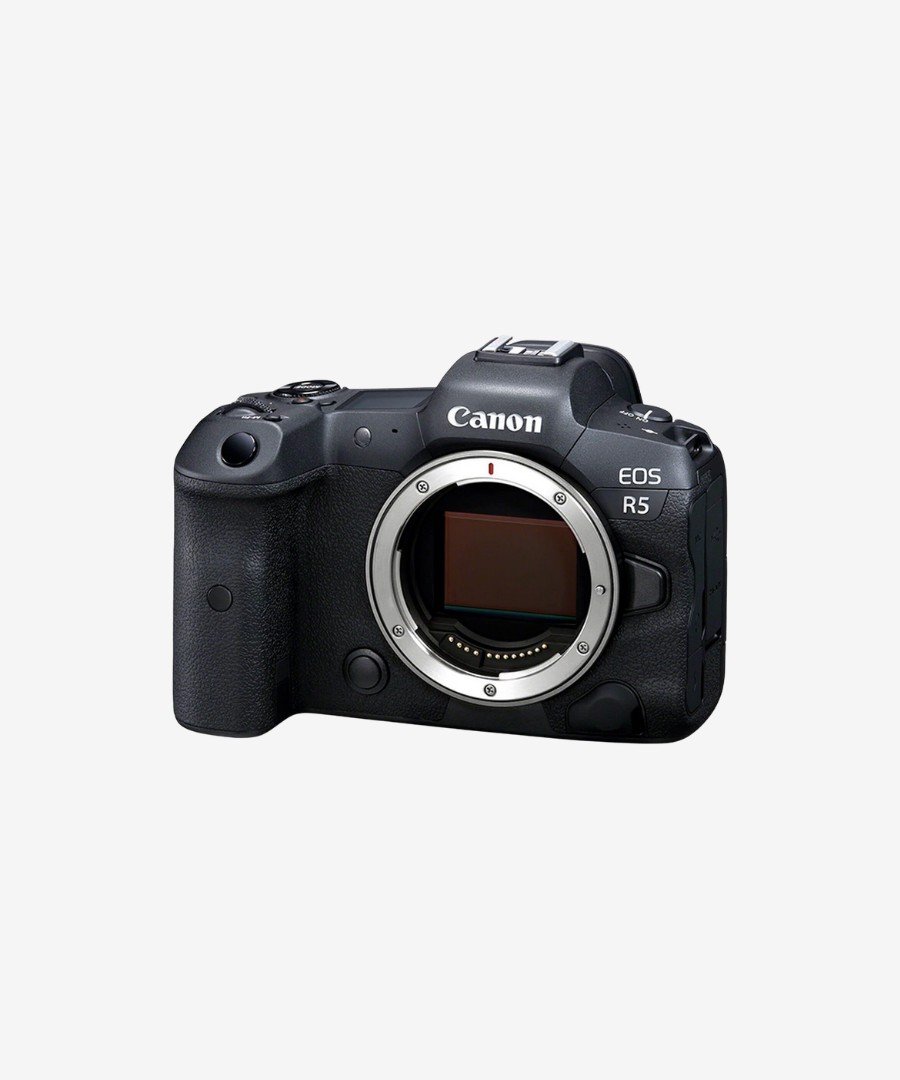
Hybrid IS Options
The Canon R5 Mark II features a groundbreaking hybrid stabilization system that combines lens-based and in-body stabilization through the RF mount’s advanced communication capabilities. The lens CPU, DIGIC X, and DIGIC Accelerator processors work together to perfect optical correction.
The RF mount’s large image circle delivers exceptional results with up to 8.5 stops of stabilization at the frame center and 7.5 stops at the edges. The system’s effectiveness comes from sophisticated sensor arrays where the lens’s gyro and acceleration sensors communicate with the camera body’s angular velocity, acceleration, and imaging sensors.
The system works best in the normal focal length range, where coordinated control shows its true potential. The R5 Mark II’s Peripheral Coordinated Control reduces the ‘wobble’ effect commonly seen in stabilized footage. Right now, this feature works only with the RF 10-20mm F4 L IS STM lens.
The RF mount’s high-speed communication handles large amounts of live data between the camera and lens. This uninterrupted connection helps both optical and sensor-shift stabilization work at their best across wide and telephoto focal lengths. Non-stabilized lenses benefit greatly from the camera’s IBIS.
The 5-axis stabilization system runs efficiently without affecting battery life by a lot. The system parks and resets automatically when turned off, though users might see a slight frame movement when powering up. Users should disable the hybrid IS system while using a tripod, except with Mode III IS, which adjusts automatically for subtle movements.
Ergonomics and Handling
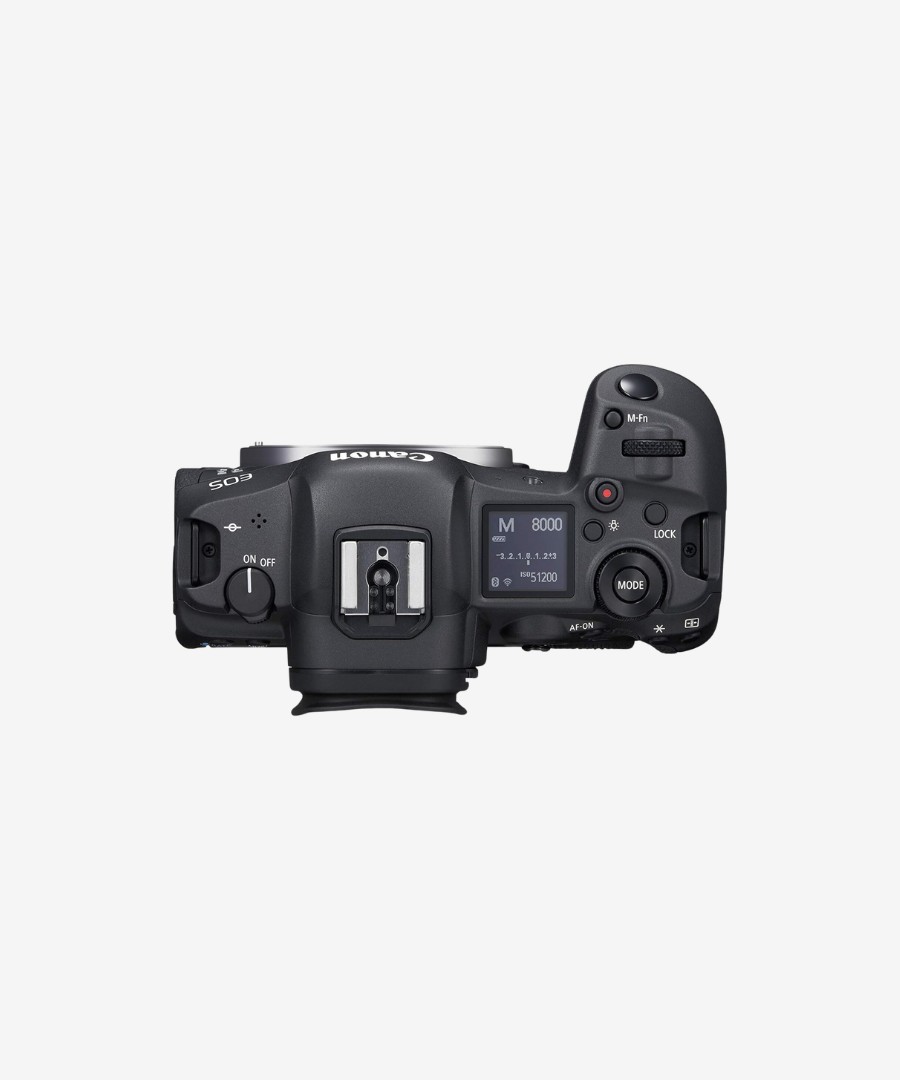
The Canon R5 Mark II’s control layout makes video shooting quick and natural. Professional videographers will appreciate how the camera body puts essential video controls right at their fingertips without diving into menus.
Button Layout for Video
A dedicated movie button lets you start recording right away. The screen shows a red outline while recording and a tally lamp lights up to confirm. You can control recording through physical buttons or by tapping the [] icon on the touch screen.
Custom Control Setup
The R5 Mark II’s Custom Controls menu takes customization to a new level. The camera lets you set different button functions for photo and video modes. You can customize these controls:
- Shutter button half-press and full-press functions
- AF-On button assignments
- Control ring operations
- Main/Quick control dial functions
The camera gives you advanced options to set up movie recording. You can change how the shutter button works in video mode. The control ring can handle exposure adjustments while you record.
The camera feels great during long video shoots thanks to smart button placement. The optional BG-R20 battery grip keeps all controls easy to reach whether you shoot horizontal or vertical. The CF-R20RP grip adds cooling without getting in your way.
The camera stores different control setups for various shooting scenarios. Videographers can create unique button layouts through the custom controls menu. This feature helps you switch smoothly between different recording modes and styles.
Display
The Canon R5 Mark II packs a sophisticated 5.76-million dot OLED electronic viewfinder with 0.76x magnification. We designed this professional-grade EVF with advanced optics that work perfectly with the eye-control AF system.
A versatile 3.2-inch touchscreen with 2.1 million dots sits at the back. The screen comes with extensive customization options for video recording that let users adjust information displays based on their workflow. Its articulating mechanism is rock-solid and makes shooting from different angles a breeze.
The EVF shows significant upgrades in brightness and responsiveness. Photographers can save different calibration profiles for various shooting conditions – indoor, outdoor, or while wearing glasses. The camera’s proximity sensor responds faster now, though some photographers might want to set manual brightness levels to evaluate exposure consistently.
Video creators will appreciate the practical display improvements. A red outline shows up during recording to confirm active capture status. The camera supports dual output, but HDMI connections affect the EVF and screen behavior differently in photo and video modes.
Professional monitoring tools are built right into the R5 Mark II’s display system. Video creators ended up with options to customize information screens, activate waveform monitors, and employ false color displays through the menu system. These monitoring features are a great way to get precise exposure and maintain professional video quality standards.
Power and Storage Solutions
The Canon R5 Mark II features a new LP-E6P battery that puts power management at its core. This battery works with older models and brings vital advantages to professional videographers.
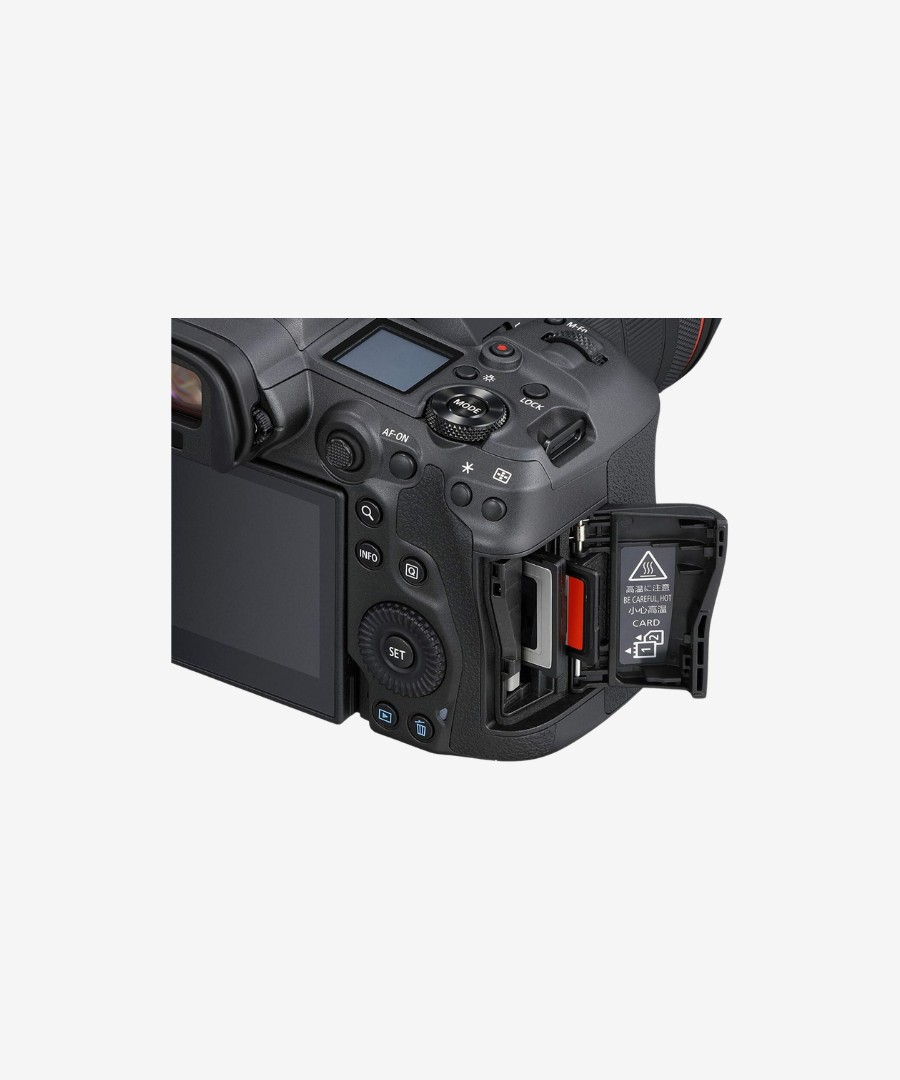
Battery Life for Video
The LP-E6P battery shows impressive stats. It delivers about 630 shots using LCD and 340 shots with viewfinder at 23°C. Battery performance changes based on recording modes. Users can capture roughly 30 minutes of 8K 50p footage with continuous AF and IS enabled. The total operation time reaches about 1.5 hours.
The LP-E6P comes with exclusive features that older batteries don’t offer. These capabilities are the foundations of:
- Pre-burst shooting
- HDMI RAW output
- Dual shooting (simultaneous stills and video)
- High-powered accessory support through the multi-function shoe
Recording Time Limits
The R5 Mark II makes substantial improvements in recording duration. The camera achieves these continuous recording times at optimal temperatures:
- 8K 30p: 26 minutes without cooling that extends to 106 minutes with the fan attachment
- 4K 60p: 45 minutes standard that goes beyond 120 minutes with temperature controls
Storage Requirements
A dual-slot setup supports both CFexpress Type B and SD card formats. Storage specs include:
- CFexpress Type B: Maximum 2TB capacity that works with CFexpress 2.0 and VPG400
- SD/SDHC/SDXC: UHS-II support for quick data handling
Storage needs change based on recording format. To cite an instance, 8K RAW at 29.97fps needs about 2600 Mbps, while Light RAW at similar frame rates runs at 1670 Mbps. The camera lets you record 8K RAW or 4K compressed footage on CFexpress while capturing lower resolution proxy files on SD cards.
The system removes the old 4GB file size limit when you use exFAT formatted cards. You can also use the dual card slots for backup recording or uninterrupted overflow recording during long sessions.
Conclusion
The Canon R5 Mark II represents a breakthrough in professional videography. Our hands-on testing revealed its 8K RAW capabilities and sophisticated stabilization system excel in a variety of shooting scenarios. The camera’s eye-controlled autofocus makes subject tracking effortless and precise.
Canon C-Log2, waveforms, and false color displays turn this camera into a powerful creative tool. The R5 Mark II goes beyond high resolutions and provides state-of-the-art solutions to real-life challenges with its advanced audio options and thermal management system.
The camera’s battery life and recording durations have improved substantially compared to previous models, especially when you have the optional cooling fan attached. The $4,299 price tag reflects the camera’s complete feature set and versatile recording options, making it a solid investment for professional videographers who demand top-tier performance.
The R5 Mark II handles demanding professional work while staying available to ambitious creators entering high-end video production. This camera delivers exactly what videographers need – state-of-the-art technology in a reliable, practical package.


